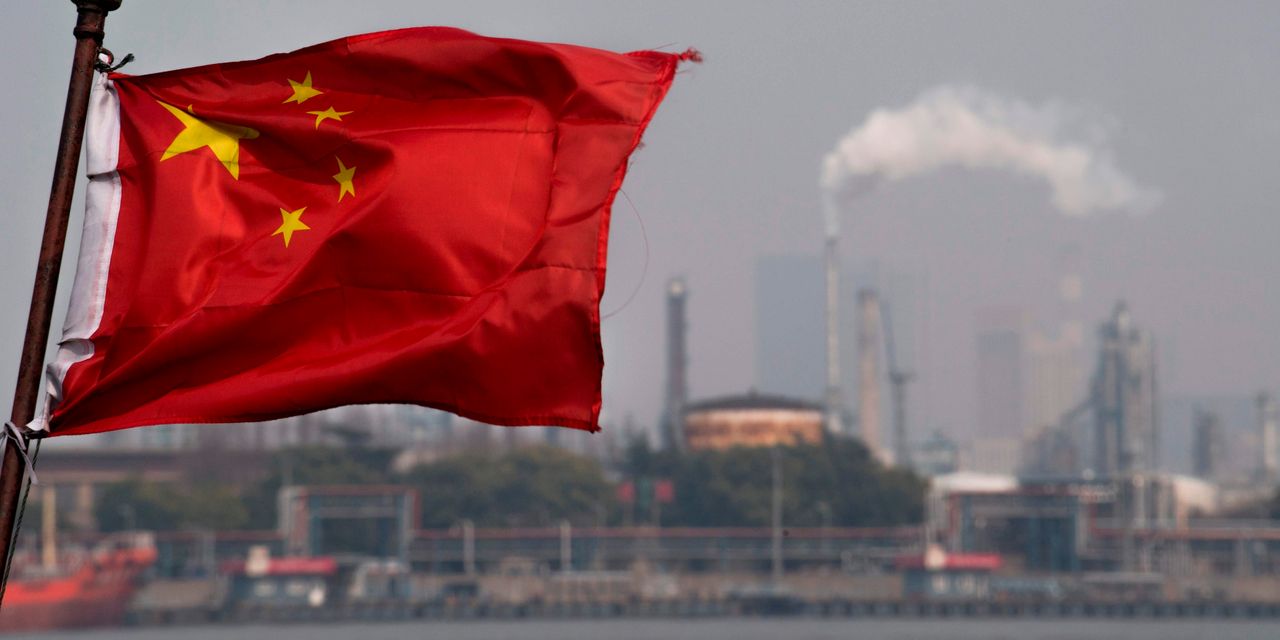Oil ended lower on Tuesday after the International Energy Agency raised its forecast for growth in crude demand, but economic data from China was seen as “underwelming,” raising uncertainty over the demand outlook from the world’s largest energy consumer.
Still, price losses were modest as the IEA’s monthly report also included a bullish assessment of China’s demand outlook and the U.S. Energy Department announced late Monday afternoon that it plans to buy up to 3 million barrels of crude oil for the nation’s Strategic Petroleum Reserve.
Price action
-
West Texas Intermediate crude for June delivery
CL00,
-0.72% CL.1,
-0.72% CLM23,
-0.72%
fell 25 cents, or nearly 0.4%, to settle at $70.86 a barrel on the New York Mercantile Exchange. The move came just a day after prices snapped a four-session losing streak. -
July Brent crude
BRN00,
-0.33% BRNQ23,
-0.35% ,
the global benchmark, shed 32 cents, or 0.4%, to $74.91 a barrel on ICE Futures Europe. -
Back on Nymex, June gasoline
RBM23,
+0.14%
settled at $2.48 a gallon, up 0.3%, while June heating oil
HOM23,
-0.88%
declined by 0.6% at $2.36 a gallon. -
June natural gas
NGM23,
-1.14%
tacked on less than 0.1% to $2.38 per million British thermal units after a 4.8% gain on Monday.
Market drivers
Crude futures found support earlier in the trading session after the Paris-based International Energy Agency, in its monthly report, said China’s demand for oil is growing at a faster-than-expected pace. The growing demand threatens to tighten crude markets and send oil prices higher as supply struggles to keep up, the report said.
The IEA lifted its forecast for global oil demand growth in 2023 by 200,000 barrels a day, to 2.2 million barrels a day. That would bring total demand to 102 million barrels a day, up 100,000 barrels a day from the agency’s April forecast. IEA estimated China’s crude demand hit a record 16 million barrels a day in March and that the country will account for 60% of growth in global oil demand in 2023.
However, economic data from China were “underwhelming,” Jameel Ahmad, chief analyst at CompareBroker.io, told MarketWatch. This wasn’t necessarily expected as the market had been “previously relatively content that the Chinese economy reopening, after protracted COVID lockdowns, would provide much-needed help to world economic momentum.”
China’s National Bureau of Statistics said retail sales, a key consumption metric, rose 18.4% from a year earlier in April, accelerating from a 10.6% increase in March, according to Dow Jones Newswires. Economists surveyed by The Wall Street Journal had forecast growth of 20.5% as the economy recovered from Covid lockdowns lifted only late last year. Industrial production rose 5.6% in April from a year earlier, accelerating after a 3.9% increase in March but came in below the 11% growth forecast by economists.
“ It appears that the Chinese economy is “encountering its own headwinds, which perhaps it will be able to handle domestically — but for global economic partners that are so reliant on demand from China, this is bad news.” ”
It appears that the Chinese economy is “encountering its own headwinds, which perhaps it will be able to handle domestically — but for global economic partners that are so reliant on demand from China, this is bad news,” Ahmad said.
Oil is “very sensitive to demand issues and given that we are operating within a weaker global economic landscape as it is, lower potential demand from a weaker Chinese economy is another kick in the teeth” for prices, he said.
See: Here’s what might lead to a spike in gasoline prices this summer
Meanwhile, the Biden administration has said it’ll begin to refill the SPR and that may help to underpin prices, analysts said.
The move likely puts a floor under oil at $70, which is the Biden administration’s stated “buy below price,” said Phil Flynn, senior market analyst at The Price Futures Group. The purchase is also an attempt to “appease” Saudi Arabia, which was apparently unhappy when the U.S. failed to buy oil “when the bank run scare gave them a chance.”
Still, the 3 million-barrel amount is “just too small” and if the government keeps up that rate, it will take years, he said, to buy back the the oil it sold from the SPR.
In a note, Warren Patterson and Ewa Manthey, strategists at ING, also said the volumes are “relatively small, particularly when you consider the DOE released more than 220 million barrels from the SPR in 2022.”
Read the full article here




